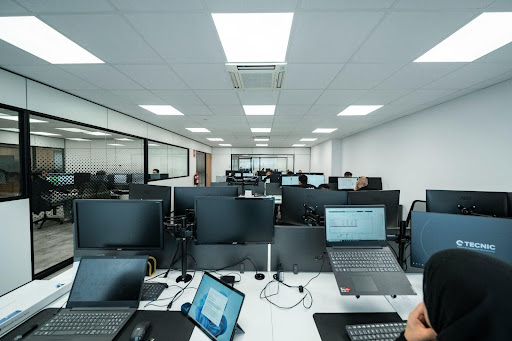Technology has made offices faster, smarter, and more connected. But there’s an often-overlooked side to our sleek laptops, printers, and servers: their environmental toll. From production to disposal, office tech carries a hidden cost—one paid in energy consumption, emissions, and e-waste.
It’s easy to ignore this reality when the focus is on performance and efficiency. Still, small shifts in how we manage and use office technology can dramatically reduce our environmental footprint. Even seemingly minor actions, like learning where to resell or recycle unused toner, can play a role. A good starting point is https://www.selltoner.com/, which helps offices repurpose surplus toner cartridges instead of sending them to landfills.
Let’s break down the true environmental impact of office tech—and what we can do to counteract it.
1. The Lifecycle of Office Equipment Is Resource-Intensive
Every piece of tech starts its life with resource extraction: rare earth minerals, plastics, and metals. According to the United Nations University, the global production of electronic devices consumed over 320 tons of gold and 7,500 tons of silver in 2019 alone. These materials require energy-intensive mining operations that contribute to pollution and deforestation.
Then comes manufacturing, where devices are assembled in large industrial facilities that generate carbon emissions and use vast amounts of water and electricity. Finally, distribution across global supply chains adds additional emissions through packaging and transport.
What You Can Do:
Extend the life of your equipment. Instead of sticking to rigid upgrade cycles, evaluate whether devices can be reused, refurbished, or repaired. Also, consider sourcing from companies that offer take-back programs or use recycled components.
2. Power-Hungry Devices Drain More Than Just the Grid
Image from Unsplash
Computers, servers, monitors, printers, and even chargers consume power even when idle. Many offices leave devices running 24/7—either out of habit or convenience. But the collective energy drain is substantial.
A single desktop computer and monitor left on overnight can use around 200–400 kWh per year, according to data from Energy.gov. Multiply that by every workstation and you have thousands of unnecessary kilowatt-hours—and the associated CO₂ emissions.
What You Can Do:
Use automatic sleep settings, power strips with timers, and train staff to shut down unused equipment. Replace older electronics with ENERGY STAR-rated alternatives, and explore cloud services that use green data centers rather than running your own inefficient servers.
3. E-Waste Is a Growing Problem
One of the most damaging consequences of office tech is e-waste. In 2019, the world generated a record 53.6 million metric tons of e-waste, with less than 20% properly recycled, according to the Global E-waste Monitor.
Printers, monitors, routers, and peripherals often end up in landfills where toxic components (like lead, mercury, and cadmium) can leak into soil and water. Toner cartridges alone—millions of which are discarded each year—take hundreds of years to decompose.
What You Can Do:
Recycle devices through certified e-waste programs. And for consumables like toner, explore resale options to keep them out of landfills. Platforms like SellToner offer an easy way to send unused cartridges to someone who can use them, rather than tossing them in the trash.
4. Office Tech Can Contribute to Heat Waste
Printers, servers, and even large monitors generate heat, which not only increases office temperatures but puts extra pressure on air conditioning systems—leading to greater energy use.
In data-heavy industries, server rooms require constant climate control, making them one of the highest energy consumers in an office environment. This becomes an even bigger issue in older buildings that lack energy-efficient HVAC systems.
What You Can Do:
Optimize ventilation and use temperature sensors in server rooms. Replace older devices with more efficient models, and consolidate servers through cloud migration. Also, place heat-generating equipment in areas that naturally stay cooler or are better ventilated.
5. Printing Is Often More Wasteful Than We Realize
Image from Unsplash
Despite digital transformation, many companies still print extensively. Whether it’s reports, onboarding paperwork, or meeting agendas, unnecessary printing leads to paper waste, ink consumption, and electricity use.
Even more concerning is the disposal of unused cartridges and toners, which not only pollute landfills but waste raw materials. And because most offices stock more than they use, surplus inventory is a quiet contributor to long-term waste.
What You Can Do:
Implement print tracking policies, default to duplex printing, and train employees to print only when necessary. Digital signatures, shared drives, and secure cloud storage can drastically reduce paper dependency. Also, find ways to repurpose surplus print materials. For example, SellToner helps offices monetize unused cartridges—preventing waste and recapturing value.
6. Short-Term Thinking Drives Long-Term Waste
One of the root causes of office tech waste is short-term planning. Companies focus on immediate efficiency without considering long-term environmental consequences. As a result, decisions around purchasing, energy use, and disposal often happen in isolation.
A sustainable tech strategy requires looking beyond convenience. It involves setting policies that promote reuse, efficiency, and accountability across teams.
What You Can Do:
Appoint a sustainability lead or committee within your IT or operations department. Set measurable goals like reducing e-waste by 20% or improving energy efficiency by replacing 50% of outdated devices. Use lifecycle analysis and product impact calculators when considering new purchases.
Modern technology has brought incredible productivity gains to the workplace—but it also comes with environmental baggage. From the extraction of raw materials to the quiet creep of e-waste, our digital habits can take a serious toll on the planet if left unchecked.
By embracing smarter strategies—such as using energy-efficient devices, implementing print management, and reselling unused resources —offices can begin to offset their environmental impact. Sustainable tech doesn’t mean sacrificing performance. It means thinking ahead, acting responsibly, and making choices that align with both business goals and the future of our planet.

